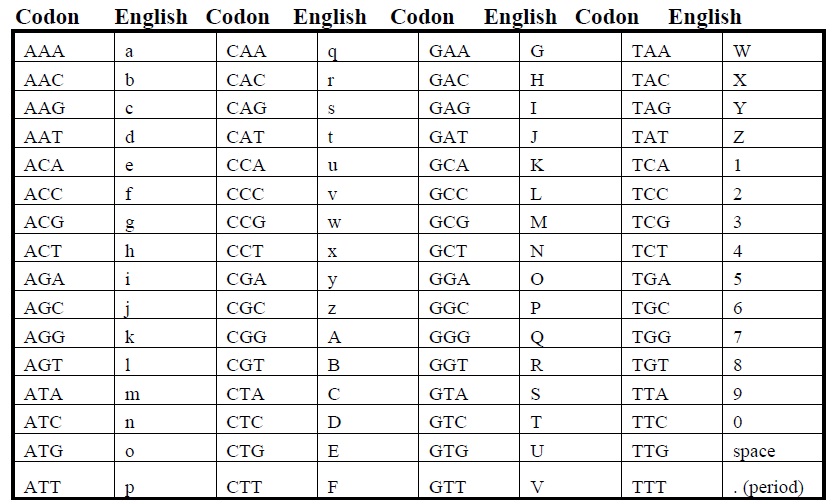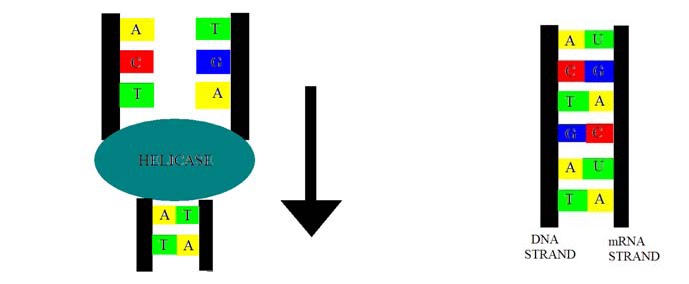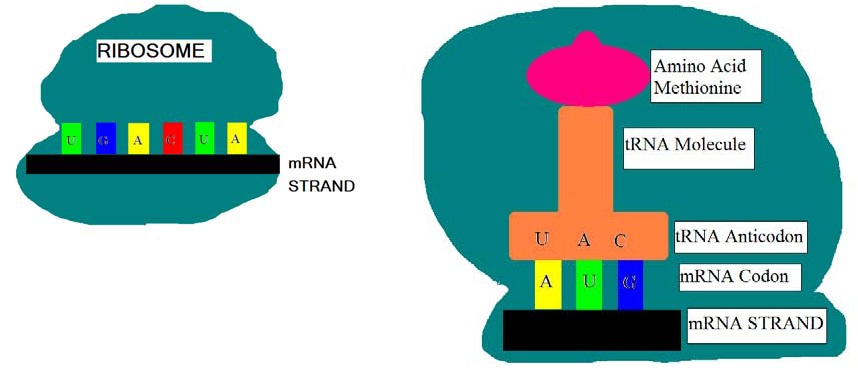





Published on Apr 02, 2024
Every cell in our body contains DNA. DNA is a set of instructions that tells our cells how to build protein. These instructions are in a language that we did not understand until recently. A strand of DNA looks like a ladder. The rungs of this ladder are made up of bases. Each rung is a pair of two bases that are bonded together in the middle. The four bases used in DNA are Cytosine, Guanine, Adenine, and Thymine and are paired together in a specific way: Adenine with Thymine, and Guanine with Cytosine. The order that these base pairs occur in determines the type of protein built.
Protein is made up of amino acids. The order of these amino acids determines the type of protein built. It is the order of the DNA bases that tell cells the order to place amino acids. It takes three DNA bases to pair for one amino acid.
This series of three bases is called a codon because it codes for which type of amino acid to be used. In this activity, you will translate a message from a newspaper or magazine into the language that DNA uses, which is the DNA code. You can also use the DNA code to send secret messages to your friends or family.
• Translate a message from English to the DNA code
• Understand how DNA codes to build specific proteins
• Paper
• Pencil, pen, or marker
• DNA code (Provided in activity)
• Write down a secret message to a friend or family member on a sheet of paper. Keep the message relatively short.
• Using the DNA code below, translate the message into DNA code. As you will notice, all possible English letters and numbers have a specific DNA codon.
• Give the secret message to the person you want to send it to.
• You must also give the person the DNA code so they can translate the message.
• As you gain more practice with the code, you will be able to send messages faster and translate them easier.
• You can practice decoding using the messages below (answers to codes are given at the end of this activity).
1) CTC ACA AAG ATG AAT AGA ATC ACG TTG CTC GCT CGG TTG AGA CAG TTG ACC CCA ATC
2) GAC CCA ATA AAA ATC TTG CTC GCT CGG TTG AAG ATG ATC CAT AAA AGA ATC CAG TTG TCG TTG AAC AGA AGT AGT AGA ATG ATC TTG AAC AAA CAG ACA TTG ATT AAA AGA CAC CAG
3) GTC ACT ACA TTG CAT ATG CAT AAA AGT TTG AGT ACA ATC ACG CAT ACT TTG ATG ACC TTG CTC GCT CGG TTG AGA ATC TTG TCA TTG ACT CCA ATA AAA ATC TTG ACA CAA CCA AAA AGT CAG TTG TGG TTC TTG CAC ATG CCA ATC AAT TTG CAT CAC AGA ATT CAG TTG ACC CAC ATG ATA TTG CAT ACT ACA TTG CTG AAA CAC CAT ACT TTG CAT ATG TTG CAT ACT ACA TTG GTA CCA ATC

The process that you used to decode the DNA message was much simpler than the process that cells undergo to translate a DNA message. Follow the pictures below to see the exact process that occurs in a cell to translate a DNA message into protein building instructions
1) Enzyme Helicase unzips DNA Strand

2) mRNA Strand fills in on one side of the unzipped DNA Strand. (Notice the base U (Uracil replaces T (Thymine)
3) mRNA Strand is sent out of cell nucleus into cell cytoplasm. Ribosome engulfs section of the mRNA
4) tRNA molecule attaches to mRNA strand by matching bases from its anticodon to mRNA’s codon. This tRNA molecule is attached to an Amino Acid.

5) tRNA molecules continue to attach to mRNA Strand matching anticodon with codon. Amino acids will attach to one another building a protein molecule.
After this activity, you should understand how specific proteins are built using DNA. Every protein in your body from your hair to the muscles blinking your eyes was built using DNA’s instructions. The same four bases are able to provide all the information needed to build protein by the order that they occur in. You should also be familiar with the different components used to build protein.
1) Decoding DNA is fun
2) Human DNA contains 3 billion base pairs
3) The total length of DNA in 1 human equals 70 round trips from the Earth to the Sun
You should also be familiar with the different components used to build protein. You should know that DNA is used to build mRNA. This mRNA then attracts a tRNA molecule that holds an amino acid. Amino acids are then connected in a specific order forming a protein. These proteins need to have specific orders of amino acids to function properly in the body. It turns out that the body sometimes makes mistakes when translating DNA’s instructions. These errors are called mutations that can go unnoticed but they can also cause fatal diseases! Hopefully you will take your time and be careful the next time you send a DNA message.
1. http://www.indiana.edu/~ensiweb/connections/genetics/dna.make.pdf
2. http://www.dna2z.com/DNA-o-gram/